PRICE MONITORING
Improve pricing with Price Monitoring
Keep your prices competitive with our price monitoring software for Google Shopping or dedicated websites.
Used by 500+ companies
Trusted by teams at







Improve pricing with Price Monitoring
Keep your prices competitive with our price monitoring software for Google Shopping or dedicated websites.

Used by 500+ companies
Trusted by teams at







COMPLETE MARKET VIEW
Live competitor pricing data with 99,9% accuracy
Enjoy live and broad overlook of the market pricing, campaigns, and price changes of your competitors — all at one glance.
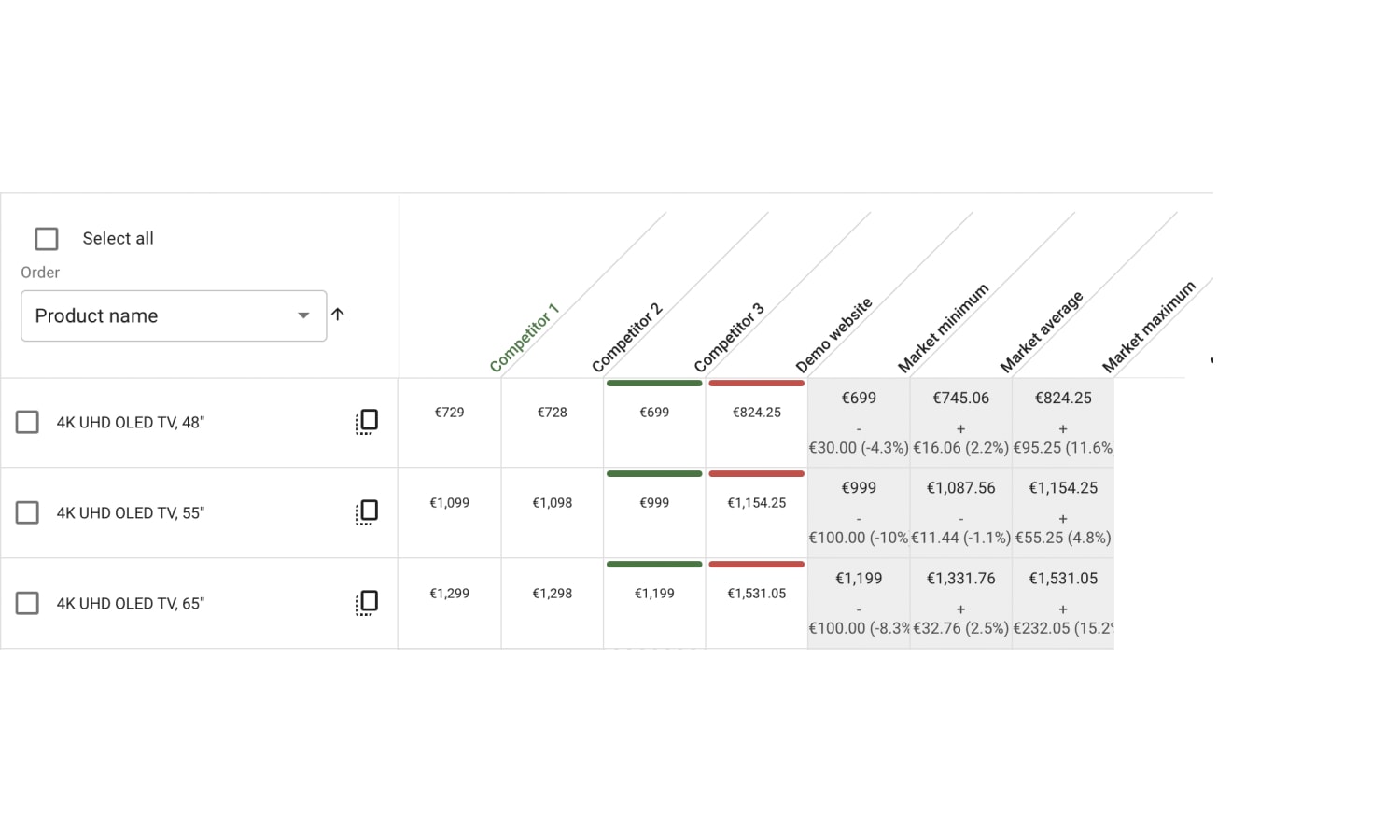
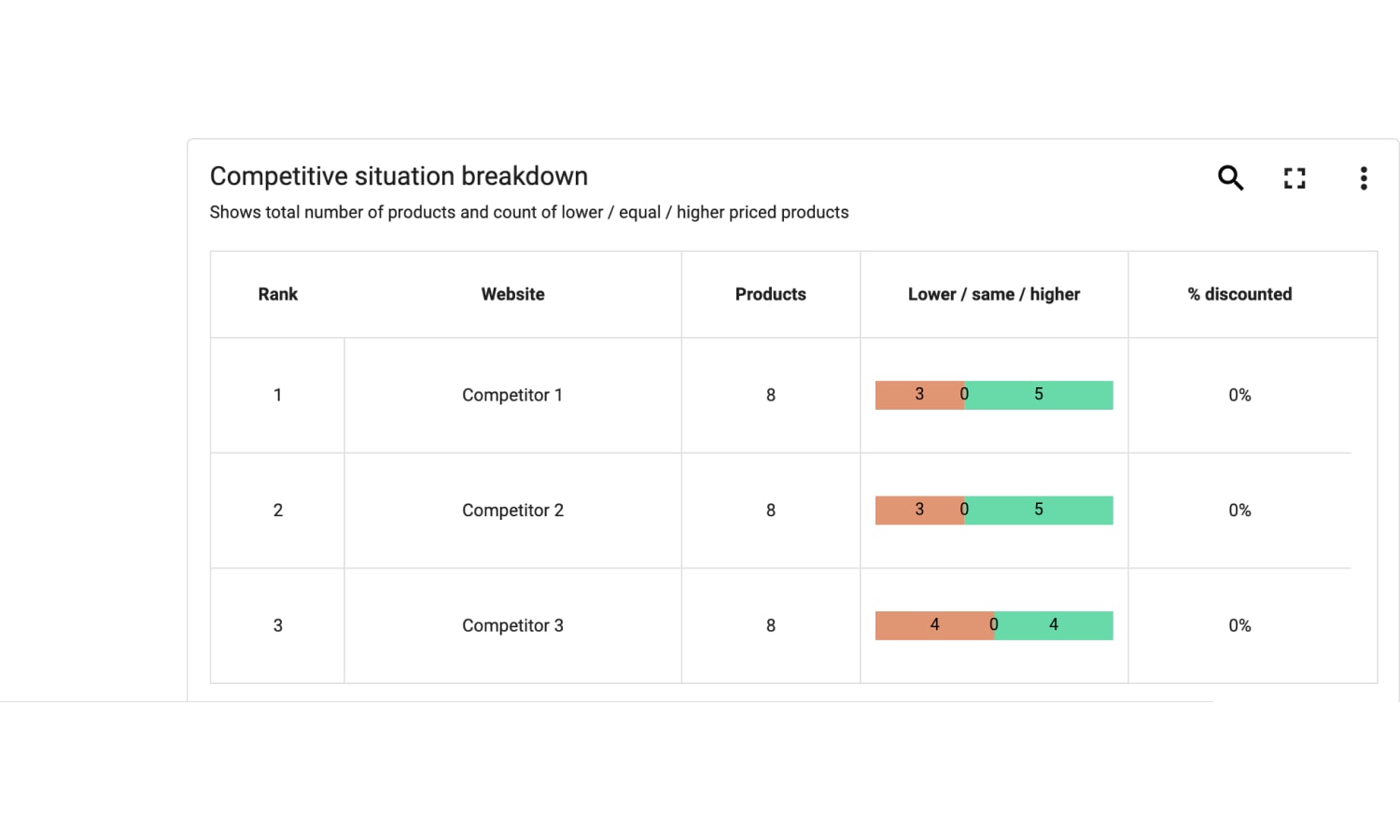
AUTOMATIC ALERTS
Stay up to date on market changes
Stay ahead of the competition by knowing when to react and when to stay put.
ACCURATE ANALYSIS
Accurate analysis on any level
Analyze your market situation on any level you want. Do analytics on company, category, brand or product level. We guarantee a high accuracy for collected price tracking data and product matches.

COMPLETE MARKET VIEW
Live competitor pricing data with 99,9% accuracy
Enjoy live and broad overlook of the market pricing, campaigns, and price changes of your competitors — all at one glance.
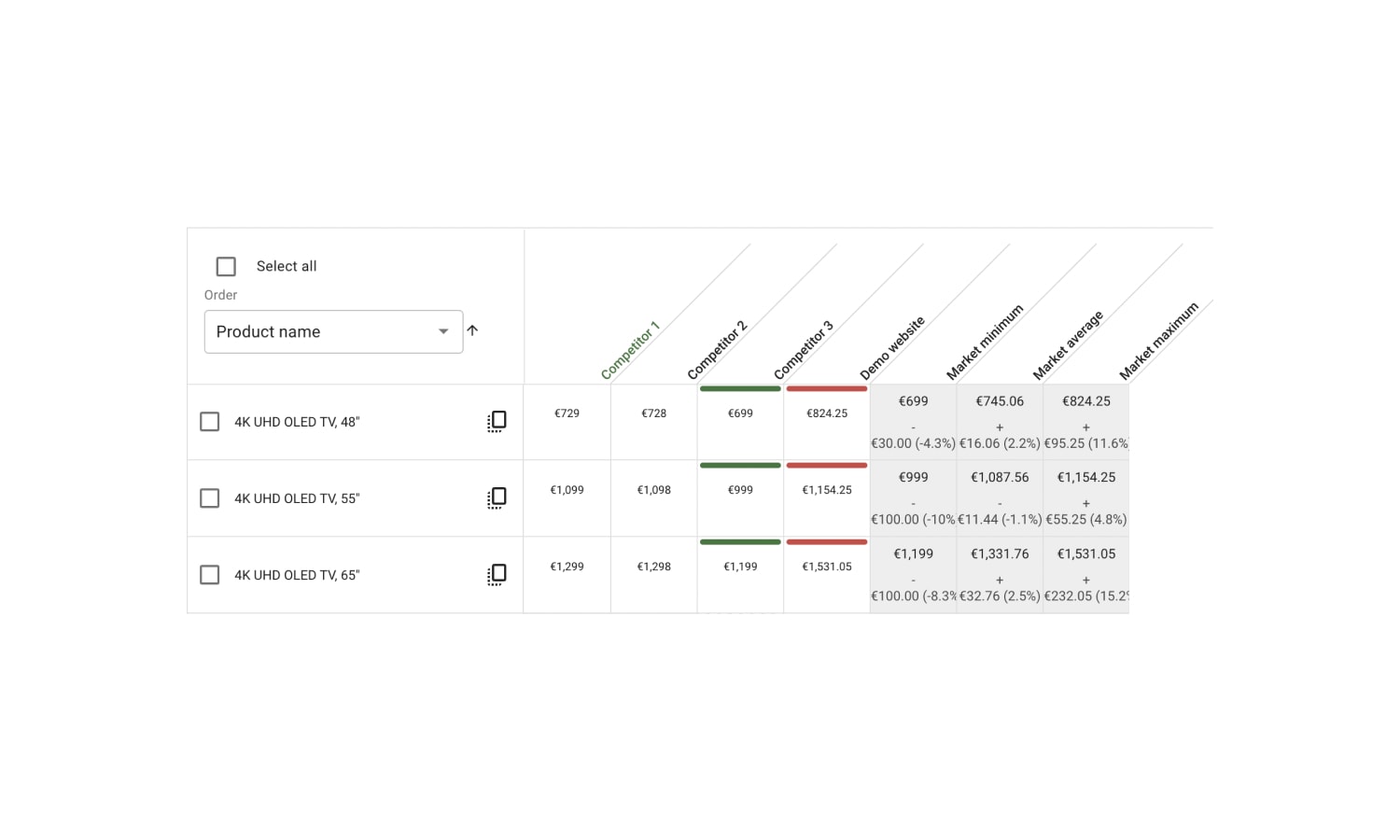
AUTOMATIC ALERTS
Stay up to date and get alerts on market changes
Stay ahead of the competition by knowing when to react and when to stay put.
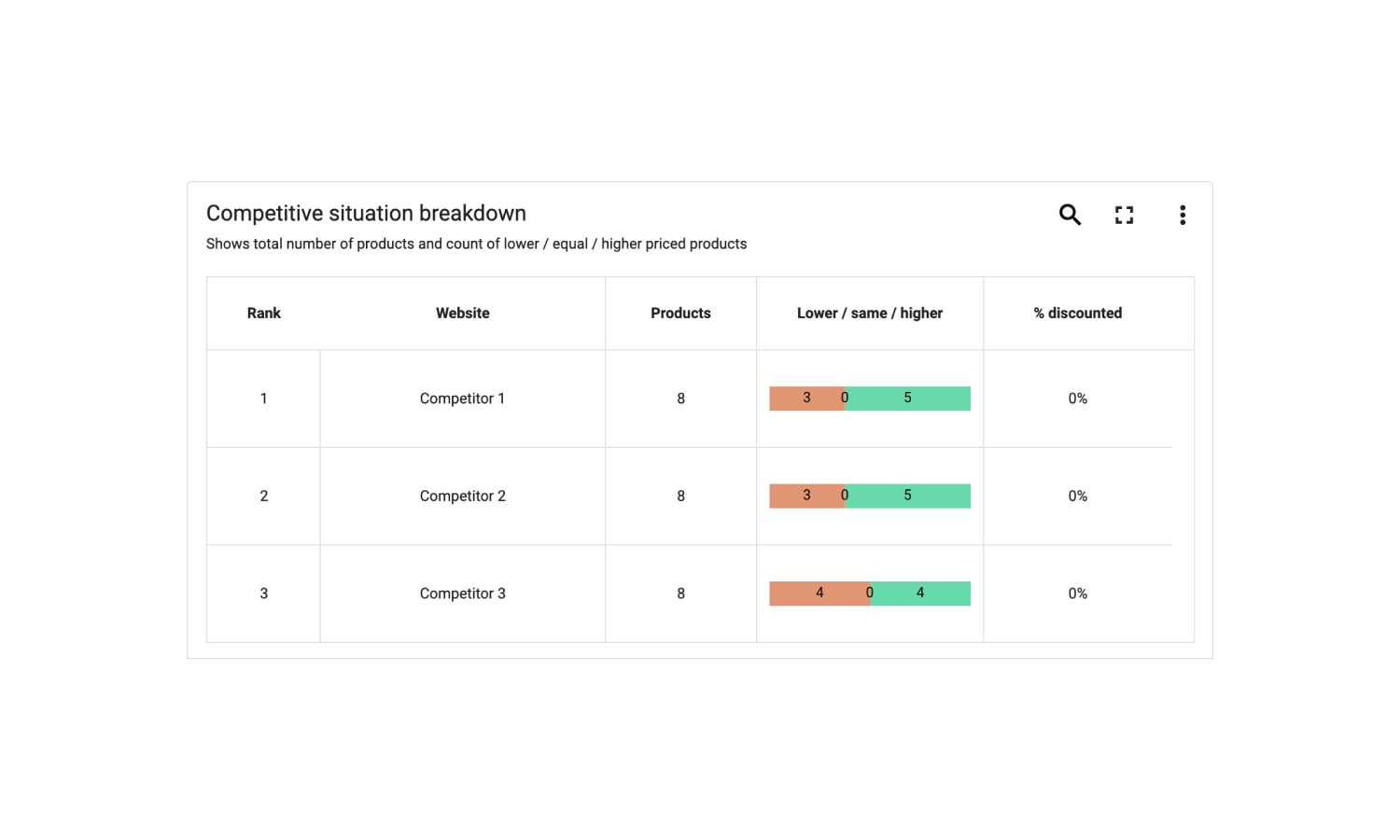
ACCURATE ANALYSIS
Accurate analysis on any level
Analyze your market situation on any level you want. Do analytics on company, category, brand or product level. We guarantee a high accuracy for collected price tracking data and product matches.
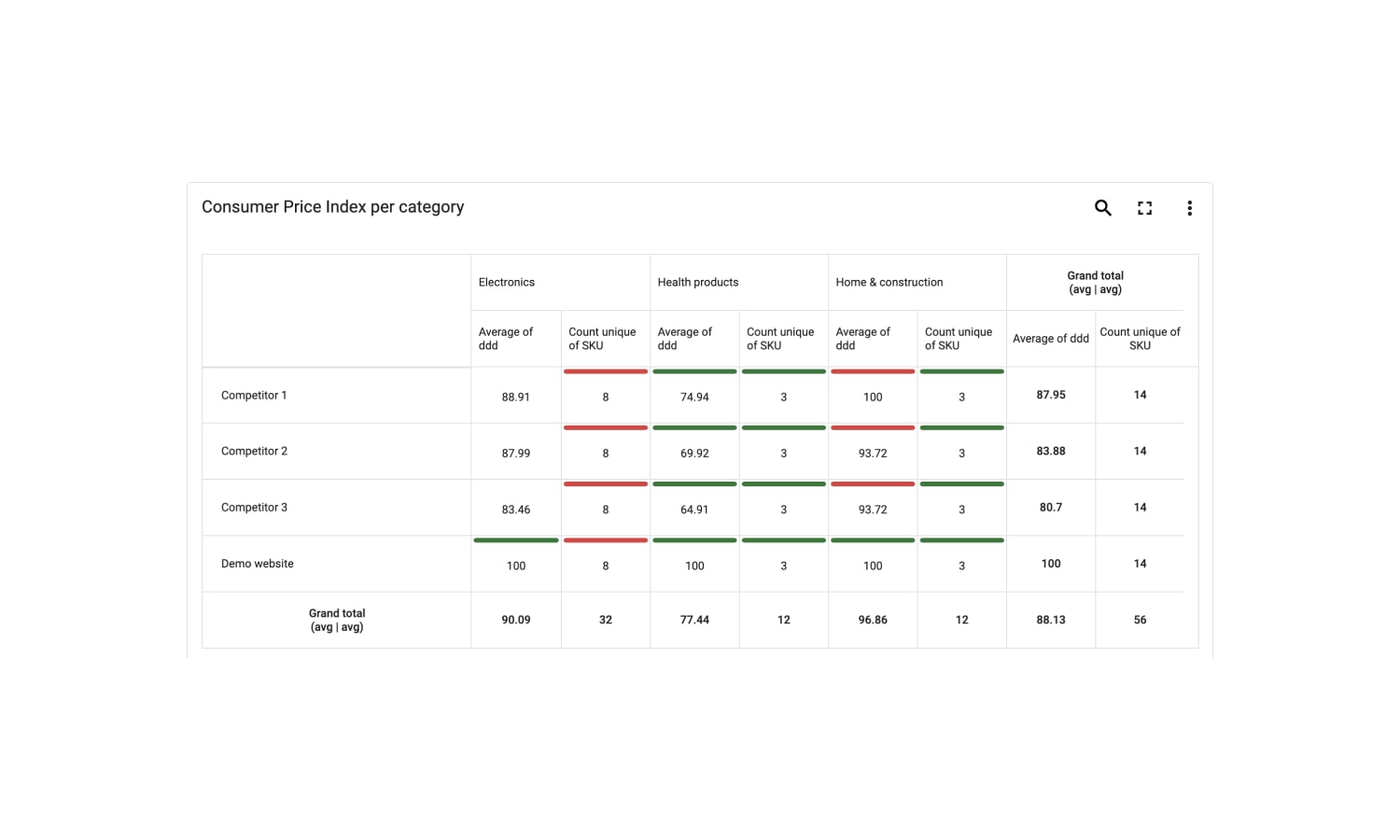
COMPLETE MARKET VIEW
Live competitor pricing data with 99,9% accuracy
Enjoy live and broad overlook of the market pricing, campaigns, and price changes of your competitors — all at one glance.

AUTOMATIC ALERTS
Stay up to date and get alerts on market changes
Stay ahead of the competition by knowing when to react and when to stay put.

ACCURATE ANALYSIS
Accurate analysis on any level
Analyze your market situation on any level you want. Do analytics on company, category, brand or product level. We guarantee a high accuracy for collected price tracking data and product matches.


“In the world of fast changing prices Sniffie has helped us to save time and earn higher revenues with price monitoring. It is a vital part of our weekly management routines”
CEO
Likelihood to recommend 10/10
Key Features of Price Monitoring
Accurate Data Collection
Enjoy our accurate and reliable price tracking data collection with confirmed product matches.
Effective Price Matrix
Understand your market situation intuitively with our Price Matrix. See everything from individual competition to indices.
Get Insights You Love
Boost your competitor analytics with flexible price tracking dashboards. Build, modify and share insights.
Key Features of Price Monitoring
Accurate Data Collection
Give an end date for the markdown optimization campaign, and our easy-to-use workflows take care of the rest.
Effective Price Matrix
Understand your market situation intuitively with our Price Matrix. See everything from individual competition to indices.
Get Insights You Love
Boost your competitor analytics with flexible price tracking dashboards. Build, modify and share insights.
FAQ
Most frequent questions and answers
You can monitor competitor prices online with web scrapers that visit websites and collect pricing information. The pricing information is then cleaned, structured, and compared to similar products on a product or company level.
Yes you can. Our customers use different integrations to support their data needs. We have ready made integrations and we also support you custom integrations.
Price monitoring means a manual or automatic process for collecting competitor pricing. It can be done with web scrapers from competitor websites.
Price Monitoring lets businesses understand the competitor’s pricing, promotions, and availability and make quick changes based on market changes.

